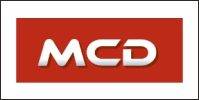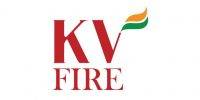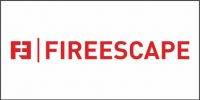 Abstract
Abstract
In this Article Dr Carl Stephen Patrick Hunter admires the progress in the fire and marine industry and the BS EN ISO Gaseous Extinguishing & Calibration Standards that underpin automatic extinguishing systems but calls for greater progress to integrate the needs of all stakeholders in the assets that protect them, the public who use them and considers it a 21st century need – on land and at sea – to constantly monitor the gaseous systems & the room integrity of the protected spaces they are designed to protect.
Gaseous Systems Leak – it’s Official
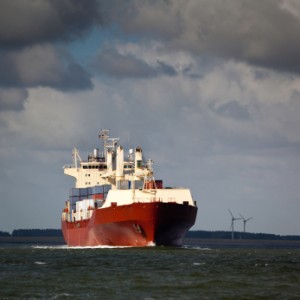
The assumptions in the installation, commissioning and maintenance of gaseous extinguishing systems is that they are highly pressurised but risk leaking and discharging. This is engineering good sense. The regulations that sensibly underpin this assumption aim to identify their leak identification at an interval of every 6 months. A cup of water stands at 1bar pressure – approximately 14.5 psi. Gaseous systems vary in pressure from FM-200™ or NOVEC™ 1230 at 25-30 bar, CO2 at 50 bar or 720 psi to Inergen at 300 bar or 4,500 psi. These are very highly pressurised systems. In engineering terms they are “dynamic” systems not passive ones.
So why then does the fire industry not constantly monitor them ?
The core regulation of them is BS EN ISO 14520 –1:2015(E) and we should be proud it exists. But let us examine what it says.
Proud of British Standards
British Standards are some of the most rigorous in the world and we should be proud that the UK and the USA leads in much of their their development. The British Standards Institute anecdotally suggest that the UK generate over 50% of all European Standards. We can be very proud of that. Clean Agent fire fighting systems of this type are governed by BS EN ISO 14520 Gaseous Fire Extinguishing Systems . They are designed to provide a supply of gaseous extinguishing medium for the extinction of fire. Several different methods of supplying extinguishant to, and applying it at, the required point of discharge for fire extinction have been developed in recent years, and there is a need for a fuller understanding of information as to the available systems and methods by the industry certainly but as importantly, by the people it is designed to protect.
BS EN ISO 14520 –1:2015(E) reasonably assumes that the execution of its provisions is entrusted to people qualified and experienced in the specification, design, installation, commissioning, testing, approval, inspection, operation and maintenance of systems and equipment, and who can be expected to exercise a duty of care to avoid unnecessary release of extinguishant. Attention is drawn to the Montreal Protocol on substances that deplete the ozone layer. It is important that the fire protection of a building or plant or any other critical infrastructure be considered as a whole. Gaseous extinguishant systems form a part of the available facilities, but it should not be assumed that their adoption necessarily removes the need to consider supplementary measures, such as the provision of portable fire extinguishers or other mobile appliances for first aid or emergency use, access by a Fire Rescue Service or any other measures that can be applied as part of a wider fire protection plan.
Are Stakeholders, Insurers, Government & the Fire Sector Working Together ?
A facility needing a clean agent system is a critical one. It protects the facility, its operating performance, its occupants and its digital information – a collection of priceless and vulnerable assets that necessitate a clean agent gaseous system. Couple this to a value being extended on business continuity and the combined value becomes a priceless one. So the stakeholders comprise the asset owners and its the leadership team, but critically it involves the people who occupy its spaces, the insurers who safeguard their lives, their consequential loss or injury and the damage to their families, the asset value itself and the fire company who design, install, commission and maintain the clean agent system.
Do we all know that 40% of facilities experiencing a business dis-continuity do not survive in business 12-18 months after it or understand when FM Global say that a third of businesses affected by fire go out of business within 3 years? Who amongst all of these could describe the operational workings of a fire extinguishing system and why is that ? Why can information on a fire system not be found by Customers on the facility website of say London Underground or the New York Subway ? An engineered fire system typically lasts 20 years, longer than some buildings ! And more automatic fire protection systems mean fewer fires develop requiring the FRS to mobilise. But we understand the Fire Rescue services far more than the fire sector or its engineering solutions.
Or look at it another way. All over the world we concern ourselves with privacy and protection of data. Legislators agonise over its preservation and governance. Governments tremble in a media obsessed by it. If we are denied it we fear our way of life will be dramatically altered. But what care or attention is given to the fire protection of it ? For too long the fire sector has hidden itself in the shadows. One day customers will question the fire safety systems of the assets they depend on. Shake the hand of the fire servicing technicians next time you see them ! Ask your utility companies to give an overview of the fire systems. Customers expect 100% availability of the asset and when they use it reasonably expect 100% safety in it. Should it not be monitored 100% of the time ? It isn’t.
Why Clean Agent Gaseous Extinguishing ?
 Gaseous extinguishants have a specific design purpose as an effective medium for the extinction of inflammable liquid fires and fires in the presence of electrical and ordinary Class A hazards, but it should not be forgotten, in the planning of comprehensive schemes, that there may be hazards for which these media are not suitable, or that in certain circumstances or situations there may be dangers in their use requiring special precautions. The appropriate fire authority, the health and safety authorities and insurers all have valuable input to the consideration of these. As indeed do the prevailing national standards and statutory regulations of the particular country.
Gaseous extinguishants have a specific design purpose as an effective medium for the extinction of inflammable liquid fires and fires in the presence of electrical and ordinary Class A hazards, but it should not be forgotten, in the planning of comprehensive schemes, that there may be hazards for which these media are not suitable, or that in certain circumstances or situations there may be dangers in their use requiring special precautions. The appropriate fire authority, the health and safety authorities and insurers all have valuable input to the consideration of these. As indeed do the prevailing national standards and statutory regulations of the particular country.
These clean agents are designed to operate in limited spaces where there is a need for speed of suppression given the asset risk and where the space is occupied by people. They have to extinguish a fire without damaging the asset they protect. They must extinguish the fire and enable business continuity of the asset whilst power is maintained to the asset so it continues to function. They must be easily maintained in-situ. They must comply with NFPA 2001 standards demanding fast discharge in 10 seconds and fire extinguishing within 30 seconds. Protecting humans and equipment alike whilst doing so in an environmental manner in regard to ozone depletion and governed by the Montreal Protocol. They must ne non-flammable and non-toxic. Contained in a design parameter which is “state of the art” and deliver confidence to the operator that it delivers “best fire safety practise”. But the ISO standard specifies its accidental discharge/leakage potential without calling for its constant monitoring. Any other pressurised system is permanently monitored but not the active fire system which “stays in its own shadows”.
Cylinders accidentally discharge. CO2 can cause fatalities if it does. 1% of pressure gauges fail and 25% of valves too. In Germany they constantly monitor at the cylinders weakest point – the cylinder neck. This is a haphazard approach to the complex engineering world a dynamic pressurised fire system exists in.
So Properly Maintain Them
It is essential that gaseous extinguishing systems be carefully maintained to ensure instant readiness when required. Routine maintenance is liable to be overlooked or given insufficient attention by the owner of the system. It is neglected to the peril of the lives of occupants of the premises and at the risk of crippling financial loss to the facility comprising the critical infrastructure. Add to this the priceless nature of data and whether the special hazard is at a nuclear power station, an electricity distribution sub-station, a data centre, complex server room, library, museum or high rise building, and these collectively provide the reader with some insight as to the critical needs of the gaseous extinguishing system. Is it enough for a fire service contractor to inspect and maintain them every 6 months ? Why are they not constantly monitored if they are expected to be constantly ready to actuate when needed ?
The importance of maintenance of such systems cannot be highly emphasised enough. Installation and maintenance should only be done by qualified personnel. Inspection preferably by a third party, should include an evaluation that the extinguishing system continues to provide adequate protection for the risk (protected zones, as well rooms built for room integrity, can change over time as they age or are modified). But as importantly the gaseous system should be maintained not just in relation to itself but in regard to the “Protected Space” into which its extinguishing agents discharge on actuation. If that space cannot “hold” the agent on discharge, or its walls and bulkheads or indeed its distributing pipework, cannot sustain the pressures of the gaseous agent on discharge, then the agent will disperse and the fire grow unimpeded. So why not constantly monitor the Room Integrity too ?
Implement ISO 17025 to Calibrate Maintenance & Test Instrumentation
 If it is accepted that maintenance of a system is fundamental to its future operation then it must also be understood that the calibration of the test equipment that enables its maintenance should be done to a “standard” too – and there is one. It’s called ISO 17025. Why is it then that the fire industry accepts using testing equipment from manufacturers who say they need only be calibrated every 5 or 10 years when BS EN ISO 17025 General Requirements for the Competence of Testing and Calibration Laboratories Standard specifically states that such equipment be calibrated every 6-12 months ?
If it is accepted that maintenance of a system is fundamental to its future operation then it must also be understood that the calibration of the test equipment that enables its maintenance should be done to a “standard” too – and there is one. It’s called ISO 17025. Why is it then that the fire industry accepts using testing equipment from manufacturers who say they need only be calibrated every 5 or 10 years when BS EN ISO 17025 General Requirements for the Competence of Testing and Calibration Laboratories Standard specifically states that such equipment be calibrated every 6-12 months ?
At Rolls Royce the test cell for their Trent XWB engines are calibrated every 3 months. In the gas industry, customers are recommended to calibrate their detectors every 6 months, especially if they are using them in confined spaces, in order to sure they are maintaining their accuracy as per technical specifications. There are serious consequences if customers do not value the understanding of their tools or equipment, which unfortunately renders them at risk. But, what about 5 year calibration certificates? On calibration and as a manufacturer of quality, we are clear that it is unsound, unsafe and unprofessional to compete on calibration just because some manufacturers are offering 5 year calibration certificates. We do not wish to contravene ISO 17025. Nor do we wish customers to believe that it is the manufacturer that dictates calibration standards, which is not the case. It is an international ISO standard. An obligation too.
We are often asked about calibration, why it is important, how often it should be done and why. The reason we know calibration to be important, and recommend its annual service is because our equipment is designed to improve safety and best practice, so ensuring the equipment used to conduct such inspections is necessary. But don’t just listen to us: our manufacturer’s recommendation is based on clear cut regulations. Under ISO 17025 standards the calibration of any monitoring or measuring equipment must be at least once a year. And this is what we do.
There are Few who Understand the Fire Sector
There exist very few Engineers in our industry who fully understand the design, installation, testing, maintenance and safety of gaseous fire fighting systems in buildings, plants or other structures, and the characteristics of the various extinguishants and types of fire for which they are a suitable extinguishing medium. It covers total flooding systems primarily related to buildings, plants and other specific applications, utilizing electrically non-conducting gaseous fire extinguishants that do not leave a residue after discharge and for which there are sufficient data currently available to enable validation of performance and safety characteristics by an appropriate independent authority. These are all common definitions in ISO 14520 :
- Defining Liquefied Gas – gas or gas mixture (normally a halocarbon), which is liquid at the container pressurization level at room temperature (20 °C)
- Defining Non-liquefied Gas gas or gas mixture (normally an inert gas), which, under service pressure and permissible service temperature conditions, is always present in the gaseous form
- Defining Maintenance – thorough check, comprising a thorough examination and any necessary repair or replacement of system component, to give maximum assurance that the extinguishing system will operate as intended
- Defining Inspection – to give reasonable assurance that the extinguishing system is fully charged and operable
- Contents Indication – Means shall be provided to indicate that each container is correctly charged; replace or refill any showing a loss of more than 5
- Liquefied Gases – check weigh or use a liquid level indicator to verify correct content of containers
But are they always applied ?
Designing the System and Maintaining the Room Integrity into which It May Discharge
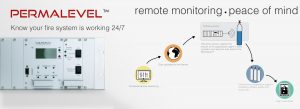 ISO 14520-1:2015(E) specifically states in 6.2.4.2 Contents Indication that – Means shall be provided to indicate that each container is correctly charged and in 9.2.1.1 At least annually, or more frequently as required by the authority, all systems shall be thoroughly inspected and tested for proper operation by competent personnel. In 9.2.1.3 The storage container contents shall be checked at least every six months as follows. : a) Liquefied gases: for halocarbon agents, if a container shows a loss of agent in quantity of more than 5 % or a loss of pressure (adjusted for temperature) of more than 10 %, it shall be refilled or replaced. b) Non-liquefied gases: for inert gas agents, pressure is an indication of agent quantity. If a container shows a loss of agent quantity or a loss of pressure (adjusted for temperature) of more than 5 %, it shall be refilled or replaced.
ISO 14520-1:2015(E) specifically states in 6.2.4.2 Contents Indication that – Means shall be provided to indicate that each container is correctly charged and in 9.2.1.1 At least annually, or more frequently as required by the authority, all systems shall be thoroughly inspected and tested for proper operation by competent personnel. In 9.2.1.3 The storage container contents shall be checked at least every six months as follows. : a) Liquefied gases: for halocarbon agents, if a container shows a loss of agent in quantity of more than 5 % or a loss of pressure (adjusted for temperature) of more than 10 %, it shall be refilled or replaced. b) Non-liquefied gases: for inert gas agents, pressure is an indication of agent quantity. If a container shows a loss of agent quantity or a loss of pressure (adjusted for temperature) of more than 5 %, it shall be refilled or replaced.
So the risks of accidental discharge or leakage is recognised.
In ISO 14520 9.2.4 Room or Protected Space Enclosures 9.2.4.1 states that – At least every 12 months it shall be determined whether boundary penetration or other changes to the protected enclosure have occurred that could affect leakage and extinguishant performance. If this cannot be visually determined, it shall be positively established by repeating the test for enclosure integrity in accordance with Annex E. 9.2.4.2 Where the integrity test reveals increased leakage that would result in an inability to retain the extinguishant for the required period, remedial action shall be carried out. 9.2.4.3 Where it is established that changes to the volume of the enclosure or to the type of hazard within the enclosure, or both, have occurred, the system shall be redesigned to provide the original degree of protection. It is recommended that the type of hazard within the enclosure, and the volume it occupies, be regularly checked to ensure that the required concentration of extinguishant can be achieved and maintained.
So the risks to a building structure ageing and generating leak sites is recognised.
3.2 Engineered systems – For engineered systems, the end-user shall be provided with the manufacturer’s system design and maintenance information. Details of the system shall include the following: a) information and calculations on the amount of extinguishant; b) container storage pressure and extinguishant quantity. But to know the contents you need to monitor it, and checking it every 6 months is not monitoring it.
So might we not just constantly monitor all of them and be in full compliance to them and the risks that are so clearly described in our own core standard ?
System Performance Verification
We know that metals corrode and pressure gauges stick. Of course they do, as will anything that is held under pressure risks doing. It is basic engineering. And Annex F of ISO 14520 specifically guides our industry as to these risks. A suitable procedure for verification of the system is as follows. a) Every 3 months: Test and service all electrical detection and alarm systems as recommended in the appropriate national standards. b) Every 6 months: Perform the following checks and inspections: 1) externally examine pipework to determine its condition; replace or pressure test and repair as necessary pipework showing corrosion or mechanical damage; 2) check all control valves for correct manual function and automatic valves additionally for correct automatic function; 3) externally examine containers for signs of damage or unauthorized modification, and for damage to system hoses; 4) check pressure gauges of extinguishing containers; liquefied gas should be within 10 % and nonliquefied gases within 5 % of correct charge pressure; replace or refill any showing greater loss; 5) for liquefied gases, check weigh or use a liquid level indicator to verify correct content of containers; replace or refill any showing a loss of more than 5 %; c) Every 12 months Carry out a check of enclosure integrity using the method described in 9.2.4.1. If the measured aggregate area of leakage has increased from that measured during installation which would adversely affect system performance, carry out work to reduce the leakage. d) As required by statutory regulations, but otherwise when convenient, remove the containers and pressure test when necessary.
Why “when convenient” ? Let us apply 21st century science to a 100 year old issue and be done with it. A dynamic system needs monitoring.
It is Time to Constantly Monitor the Fire System Delivering our Resilience
Gaseous fire systems deliver the very resilience we need. But resilience means the permanence of capability and functionality. That permanence can only be delivered by constant monitoring of the systems that enable it.
The science of a gaseous extinguishing system is a complex one. The mathematics that underpin its science are demanding ones. But in simple terms gaseous systems are pressurised and in that they are dynamic not passive ones. They are there to protect critical infrastructure in a a safe and expeditious manner in the only way that a gaseous system can. We would not imagine an alarm system exists without monitoring it 24/7, but why are we still leaving unattended the very automatic gaseous clean agent extinguishing systems that protect us when even the core regulations of its installation and maintenance specifically allude to its potential to accidentally discharge or leak its contents ?
Fortunately lead elements of the critical infrastructure community are asking the same question. So are the world’s insurance companies.
But should our own fire industry not answer the question by implementing constant monitoring 24/7/365 before it is asked of them by the very people it is helping protect ?
A Biography of the Author
Dr Carl Stephen Patrick Hunter BA(Dunelm) Hon DSc FRINA FIMarEST MRAeS is CEO and Managing Director of Coltraco Ultrasonics, a British designer and manufacturer of portable and fixed monitoring systems for the naval, shipping, offshore, energy and fire sectors. He is a former Greenjacket Officer in the British Army and a Graduate and Honorary Doctor of Science from the University of Durham, a Fellow of the Royal Institution of Naval Architects, a Fellow of the Institute of Marine Engineers and Member of the Royal Aeronautical Society, Royal Institute for International Affairs, Royal Society of Asian Affairs and Royal United Services Institute. Dr. Hunter is a Council Member of the British Naval Equipment Association, a member of the Export Council of the Fire Industry Association(FIA) and the FIA’s Working Group Gases which is the Lead UK Fire delegate organisation to British Standards and BSI the lead fire delegate to the International Standards Organisation in Gaseous Extinguishing Systems and an active member of the Society of Maritime Industries the lead British marine organisation and voice of the marine industry in the UK. His interests are in Physics, International Business, the Constitution, South Asia, International & Strategic Affairs, Defence, the British Commonwealth and bringing UK Scientists into business. Dr Carl lives in London and Somerset in England, travels extensively in Asia, Europe and the Middle East, has been married for 27 years to Dorothy and a proud Father of four Children.






























